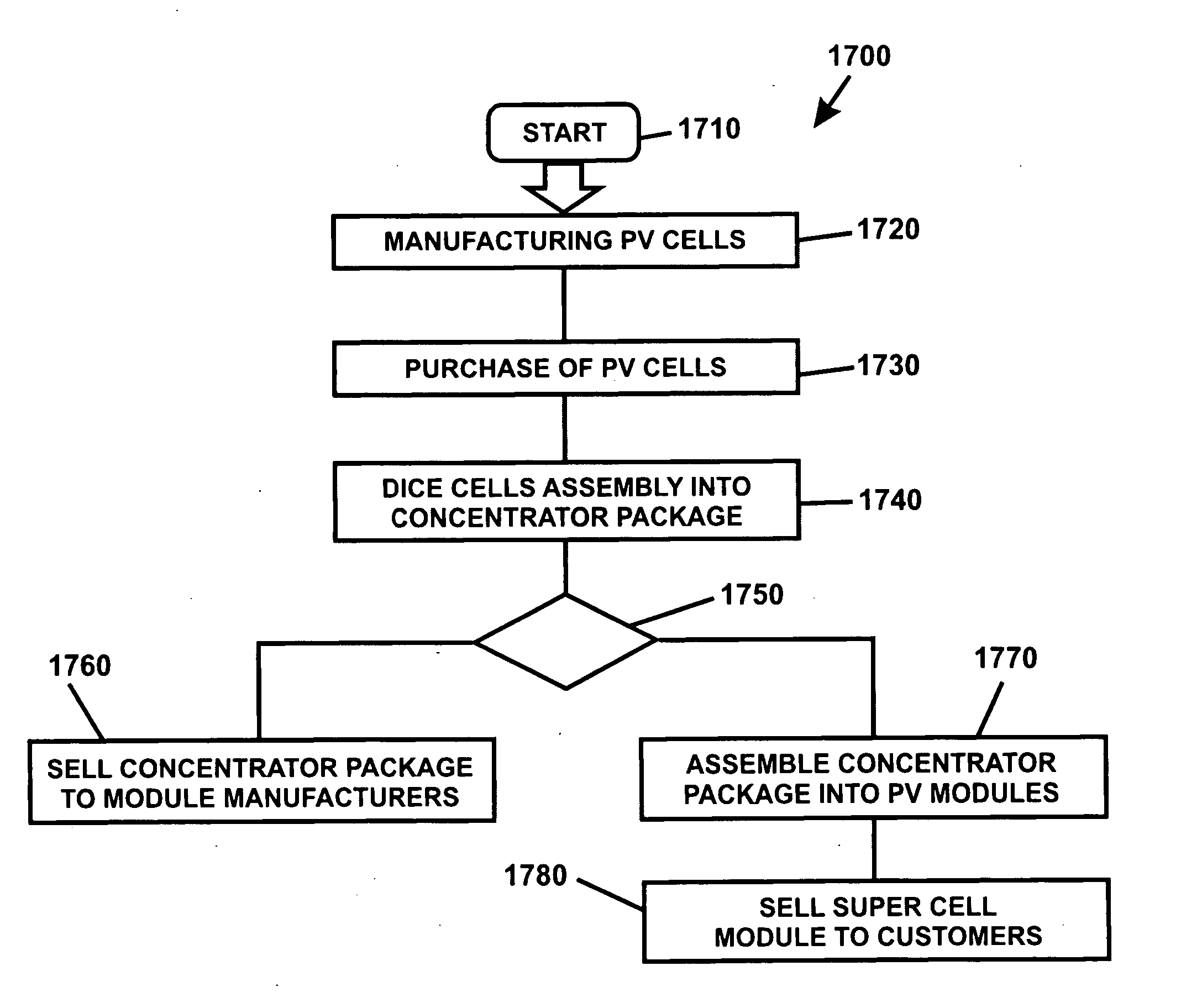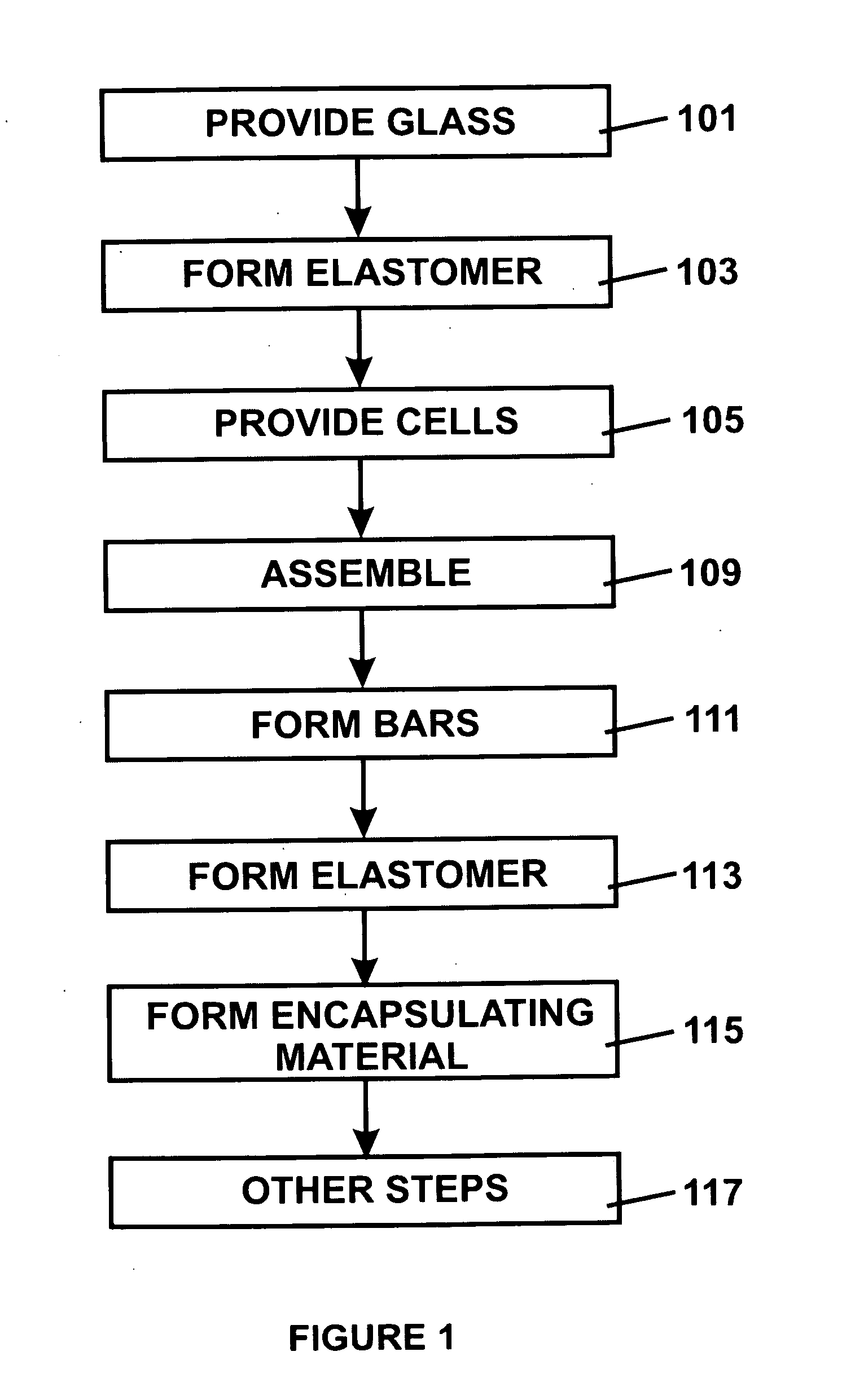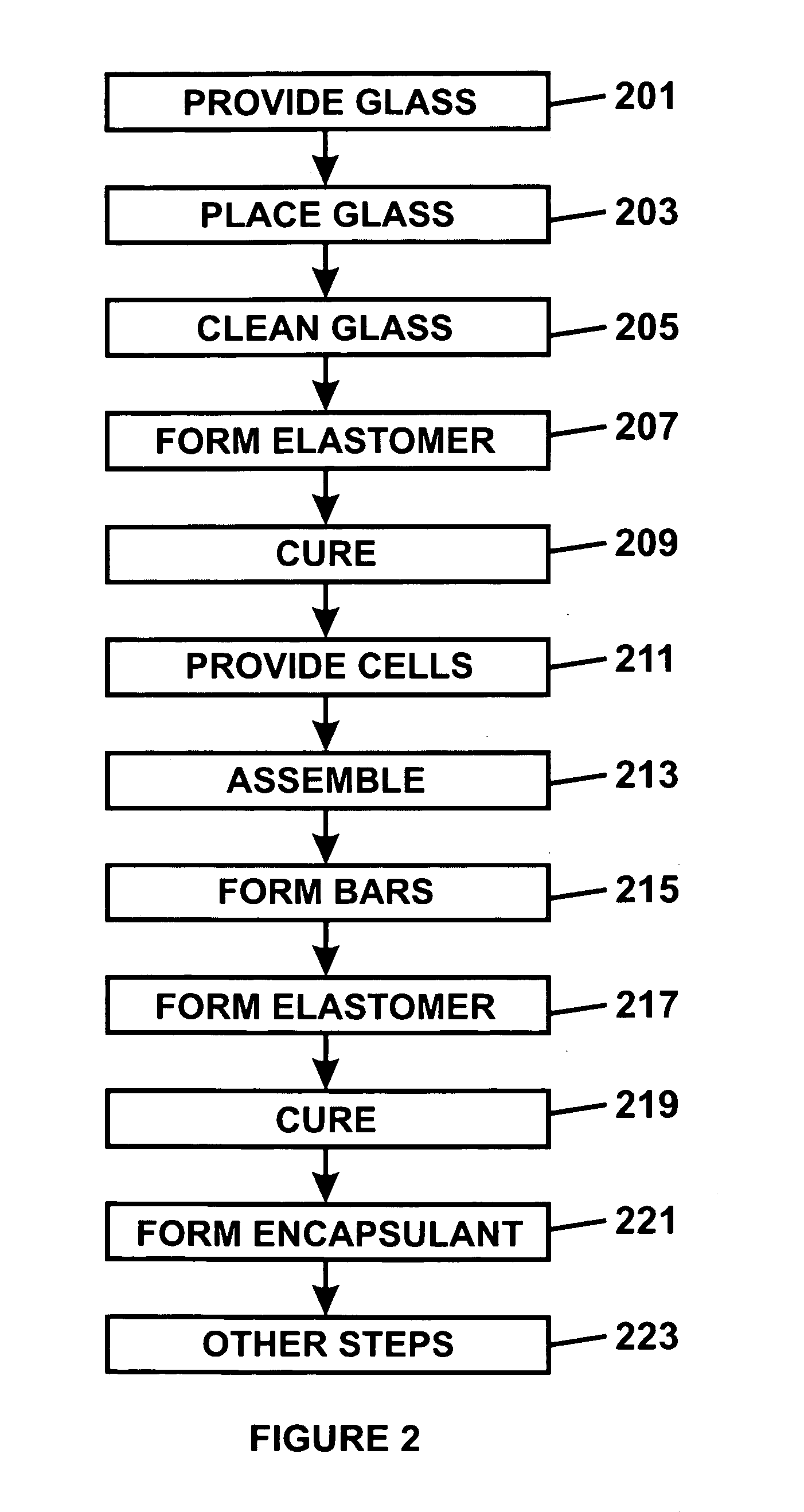Method and system for manufacturing solar panels using an integrated solar cell using a plurality of photovoltaic regions
a solar panel and photovoltaic region technology, applied in the field of solar energy techniques, can solve the problems of inconvenient use, high cost of solar cells, and still certain limitations, and achieve the effects of convenient use, less cost, and convenient handling
- Summary
- Abstract
- Description
- Claims
- Application Information
AI Technical Summary
Benefits of technology
Problems solved by technology
Method used
Image
Examples
Embodiment Construction
[0028] According to the present invention, techniques related to solar energy are provided. More particularly, the present invention provides a method and resulting solar panel apparatus fabricated from a solar cell including a plurality of photovoltaic regions provided within one or more substrate members. Merely by way of example, the invention has been applied to a solar cell including the plurality of photovoltaic regions, but it would be recognized that the invention has a much broader range of applicability.
[0029] A method 100 for fabricating a solar cell panel structure according to an embodiment of the present invention may be outlined as follows and has been illustrated in FIG. 1: [0030] 1. Provide a cover glass (step 101); [0031] 2. Form a first layer of elastomer material (e.g., EVA) (step 103) overlying a top surface of the cover glass; [0032] 3. Provide a plurality of solar cells (step 105) including photovoltaic regions; [0033] 4. Assemble (step 109) the plurality of ...
PUM
| Property | Measurement | Unit |
|---|---|---|
| Fraction | aaaaa | aaaaa |
| Length | aaaaa | aaaaa |
| Width | aaaaa | aaaaa |
Abstract
Description
Claims
Application Information
 Login to View More
Login to View More - R&D
- Intellectual Property
- Life Sciences
- Materials
- Tech Scout
- Unparalleled Data Quality
- Higher Quality Content
- 60% Fewer Hallucinations
Browse by: Latest US Patents, China's latest patents, Technical Efficacy Thesaurus, Application Domain, Technology Topic, Popular Technical Reports.
© 2025 PatSnap. All rights reserved.Legal|Privacy policy|Modern Slavery Act Transparency Statement|Sitemap|About US| Contact US: help@patsnap.com



